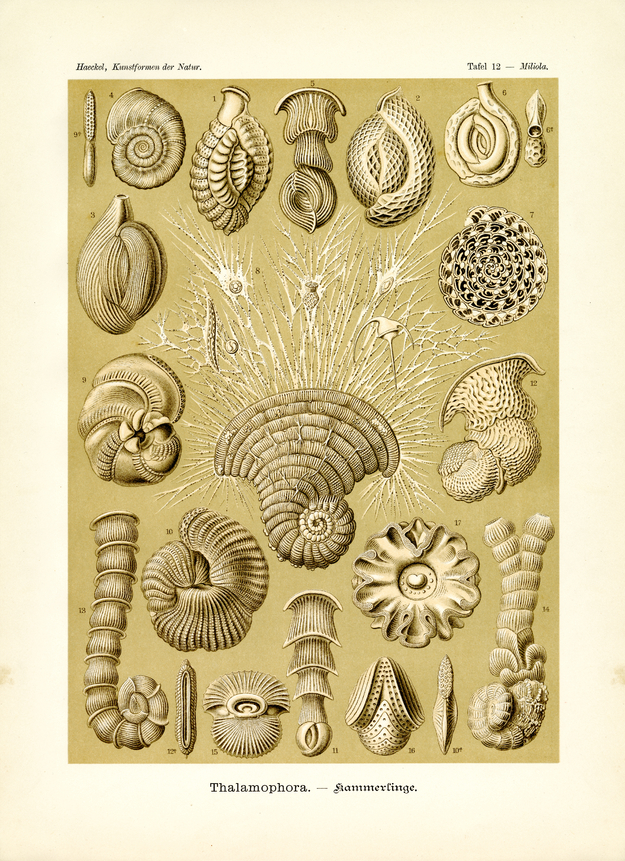Translation of the original German introduction by Ernst Haeckel:
Phylum of Protozoa (Urtiere): - class of Rhizopoda (Wurzelfüßer); - subclass of Thalomophora (Kammerlinge); - legion of Eforaminia or Imperforata (Dichtwandige); - family of Miliolida.
All Thalamophora illustrated on this table belong to the family of Miliolida, a division of the sea dwelling Eforaminia; they are differentiated from the other legion of the subclass, the Foraminifera (tab. 2), due to the fact that their lime shell is solid, porcelain-like, not having sieve-like openings. The numerous flexible Pseudopodia (pseudo-feet or plasma-columns/filaments) that emanate from the living cell body encased in the shell, do therefore not pass out through sieve holes of the shell in these Eforaminia, but through the simple mouth of the latest, youngest chamber (fig. 1, 2, 6a, 12a, 15) or through the holes of a cover panel that closes this mouth (fig. 8, 9a, 10a, 16). In their earliest youth all Miliolida are ‘Mono-chambered’ (Monostegia), as it is found permanently in Cornuspira, fig. 4. Later the growing shell usually attaches numerous chambers that grow in size and are partially separated through diaphragms. These ‘Multi-chambered’ (Polystegia) can reach a diameter of more than 30mm.
Translation by VR Translators Bangalore
We've scanned the original lithography at 1200dpi on the Epson A3 scanner of A3 scanner huren. You can download a 400dpi JPEG here.
